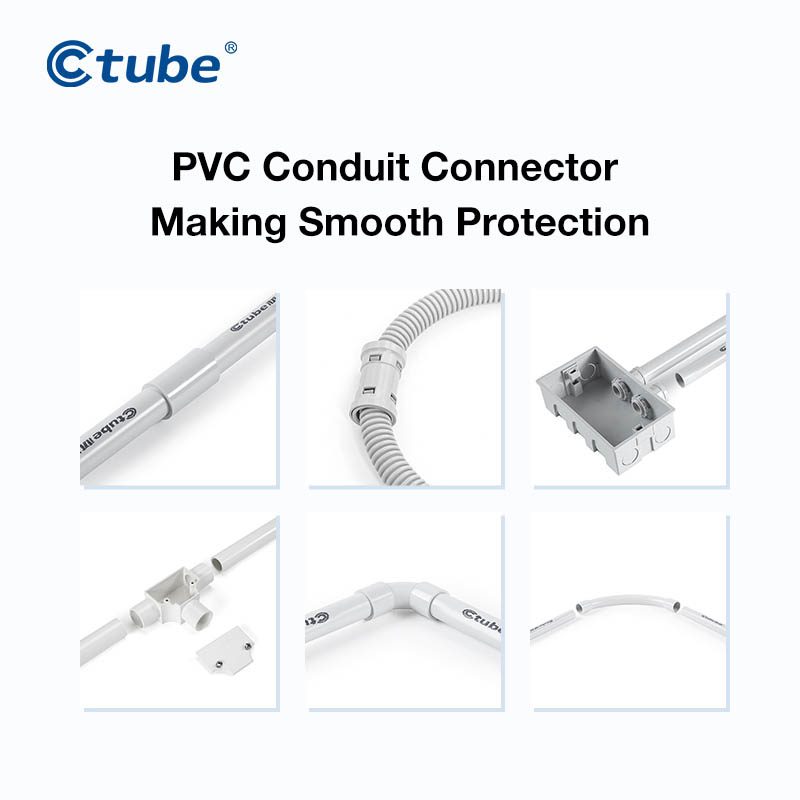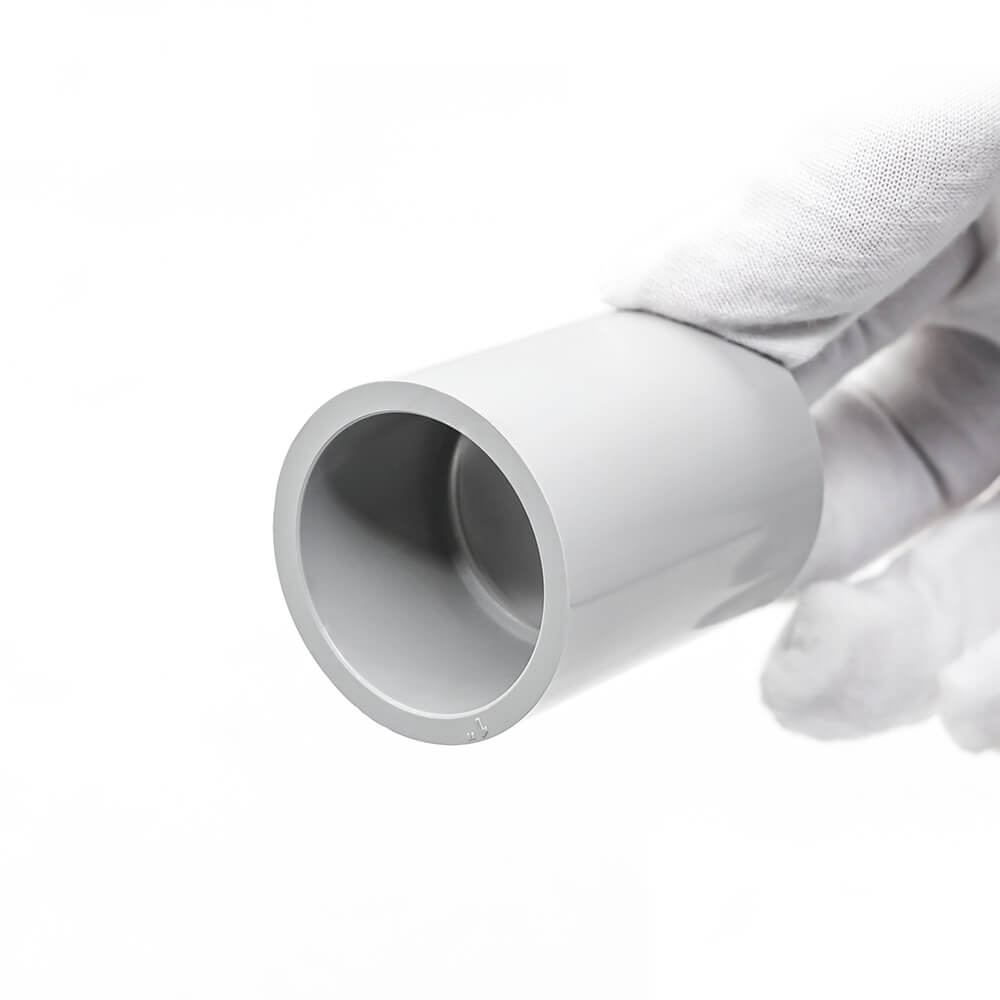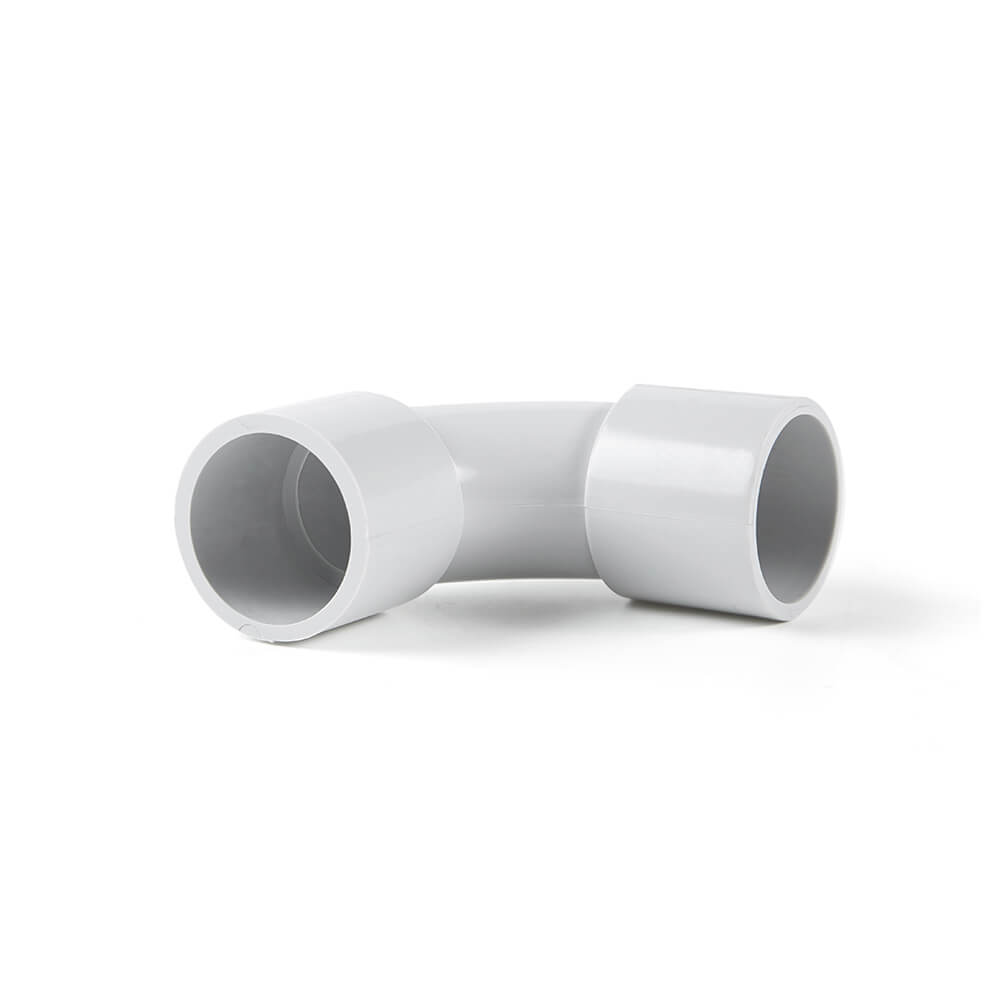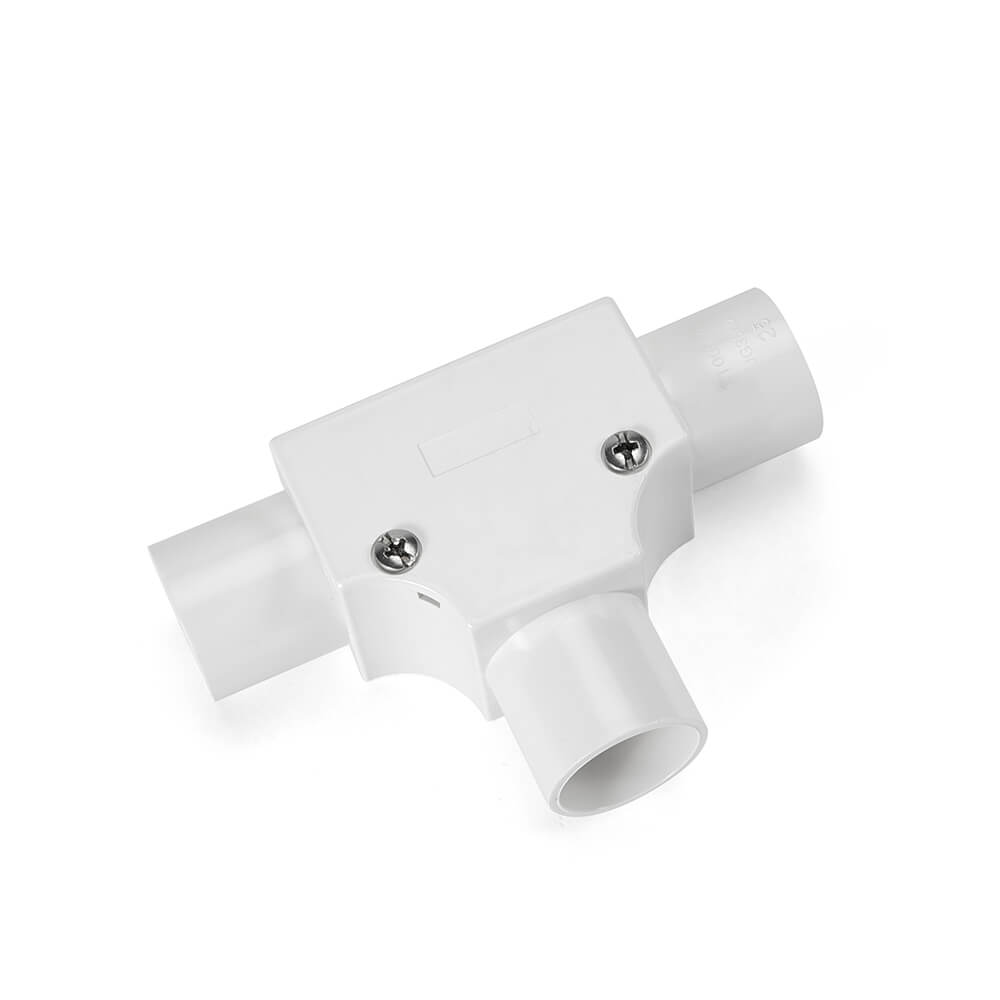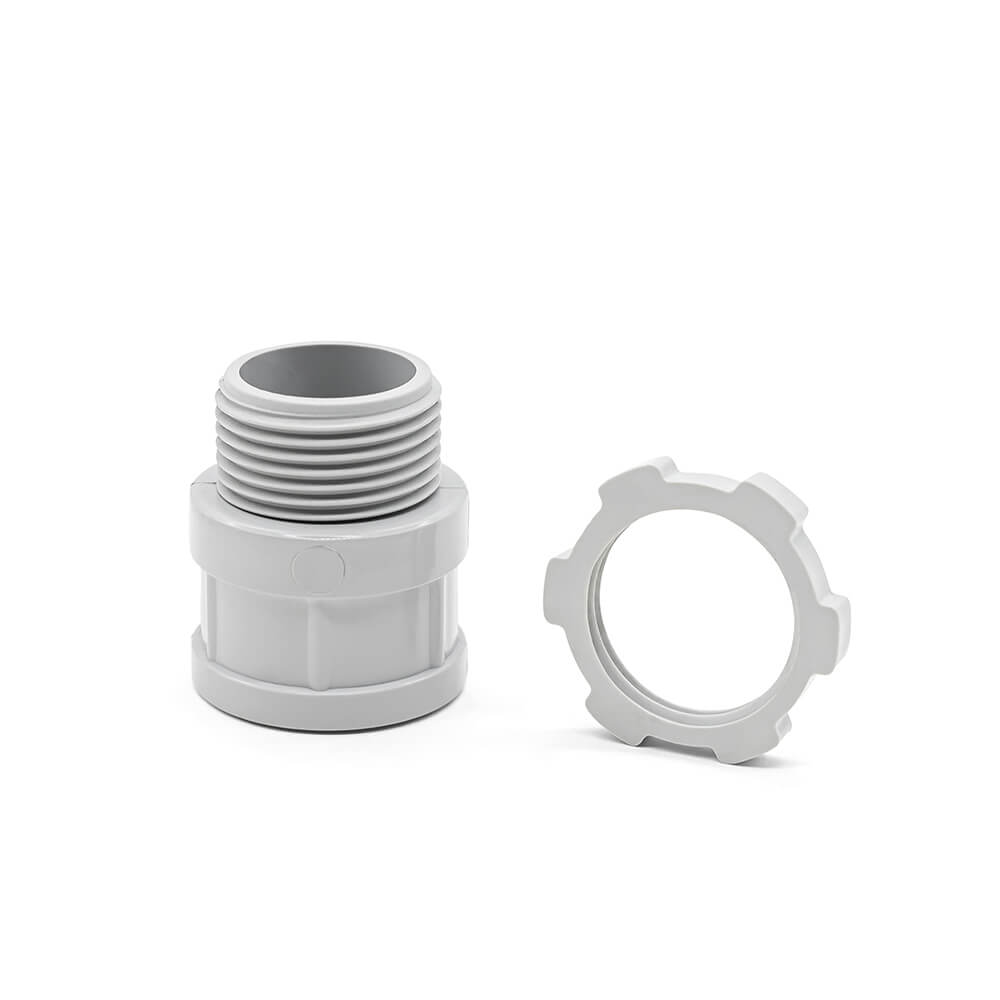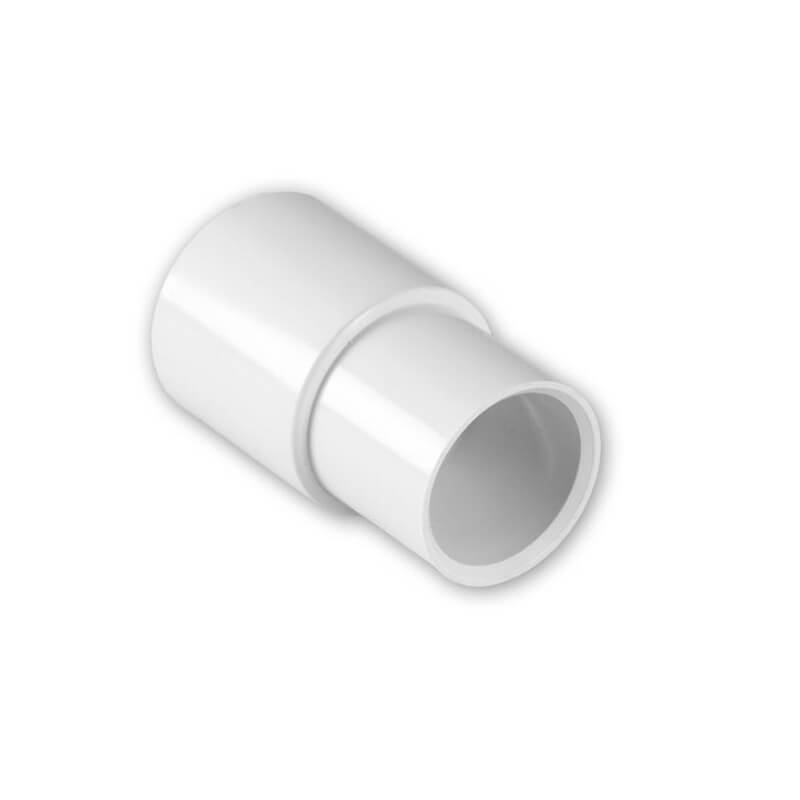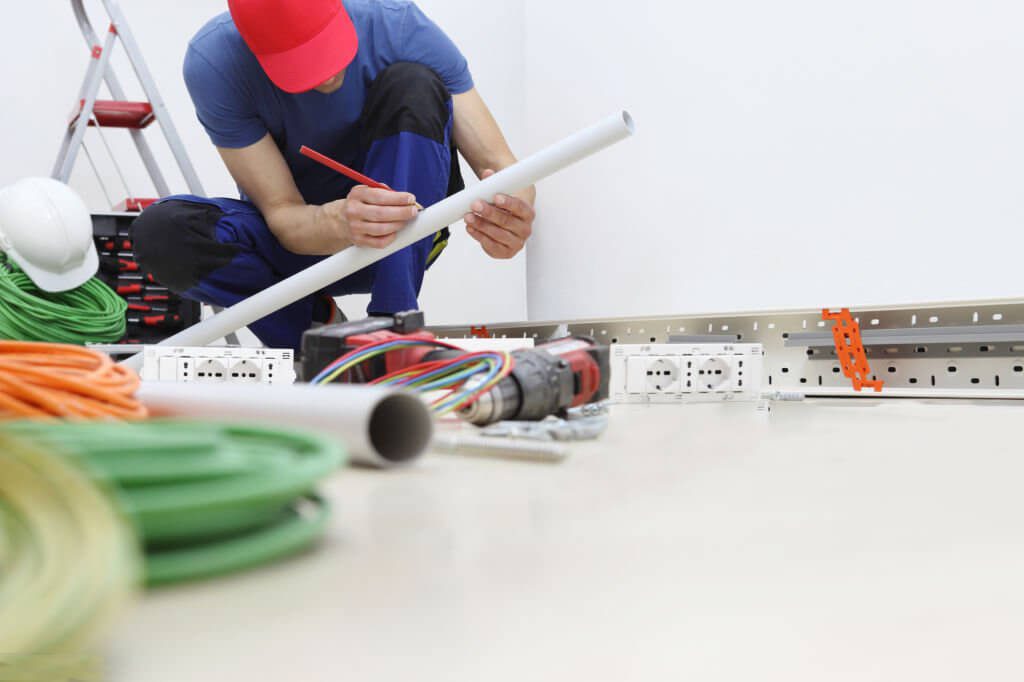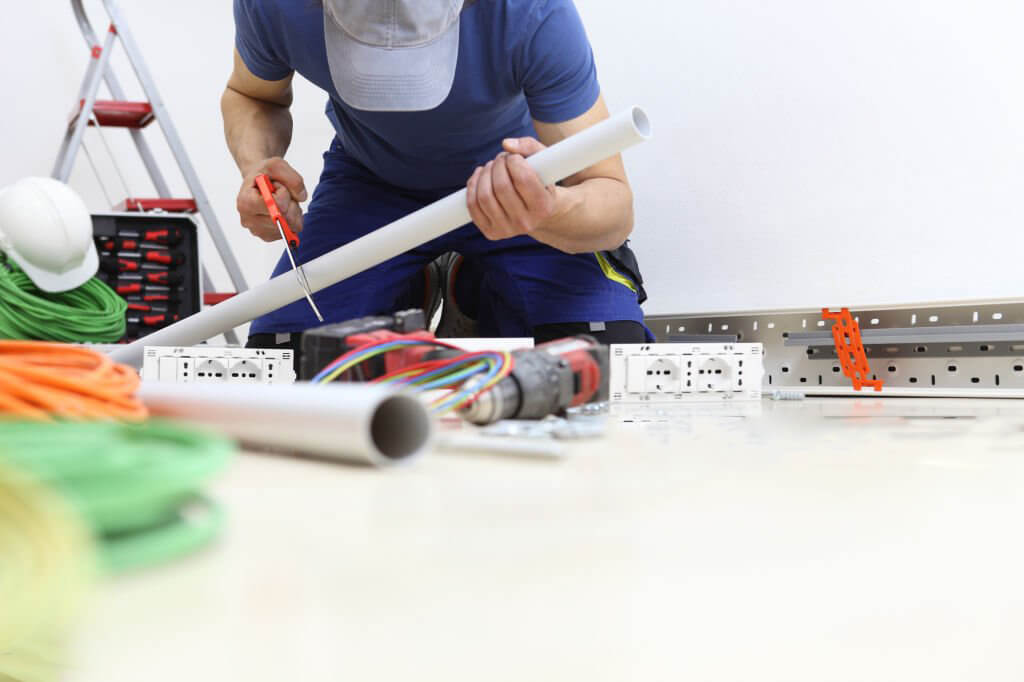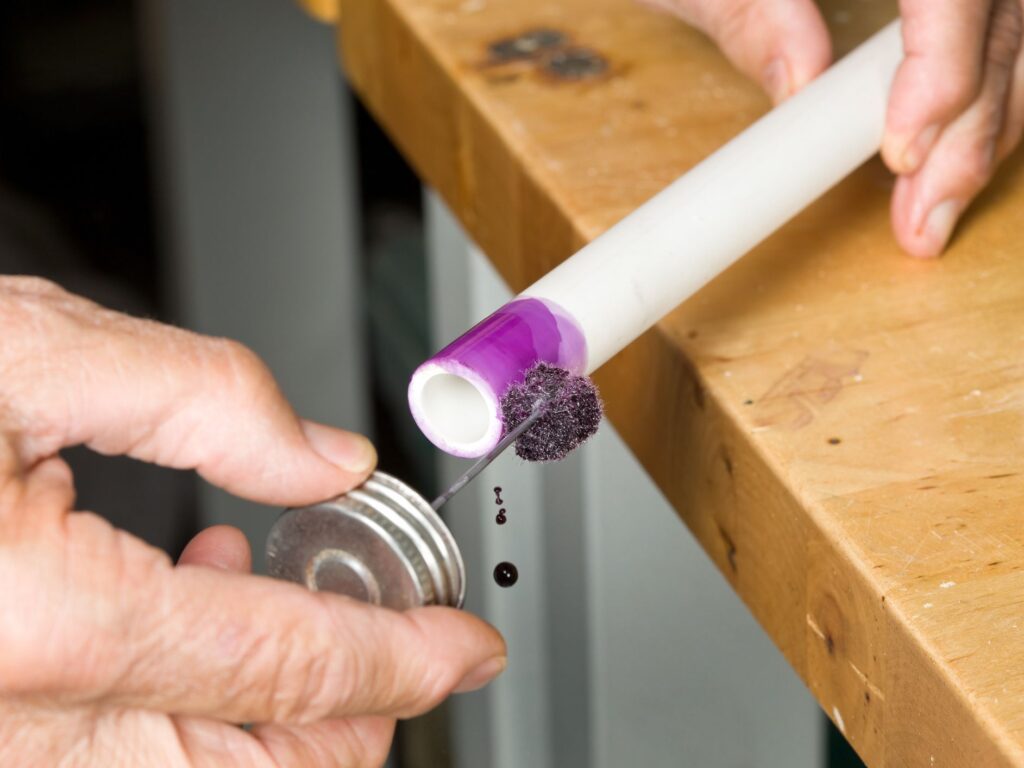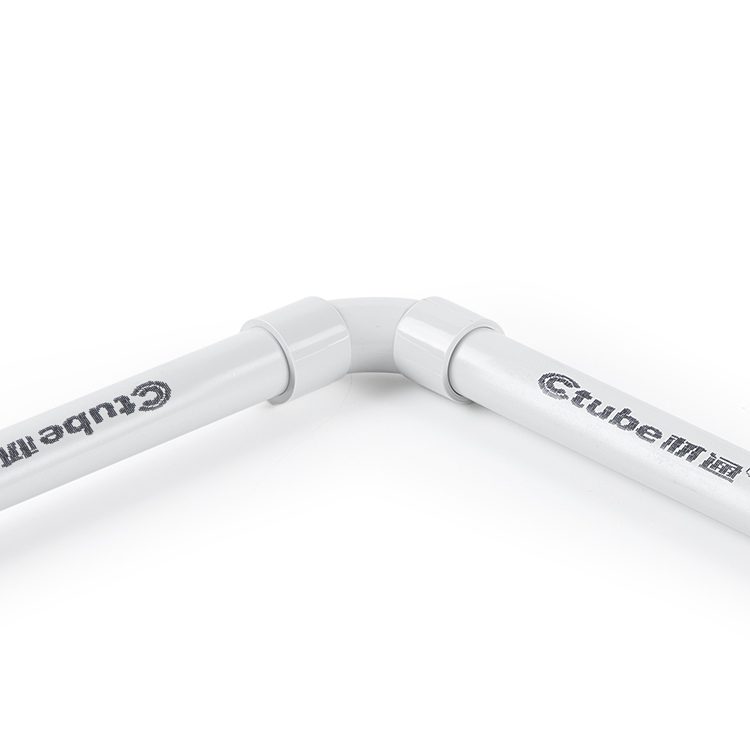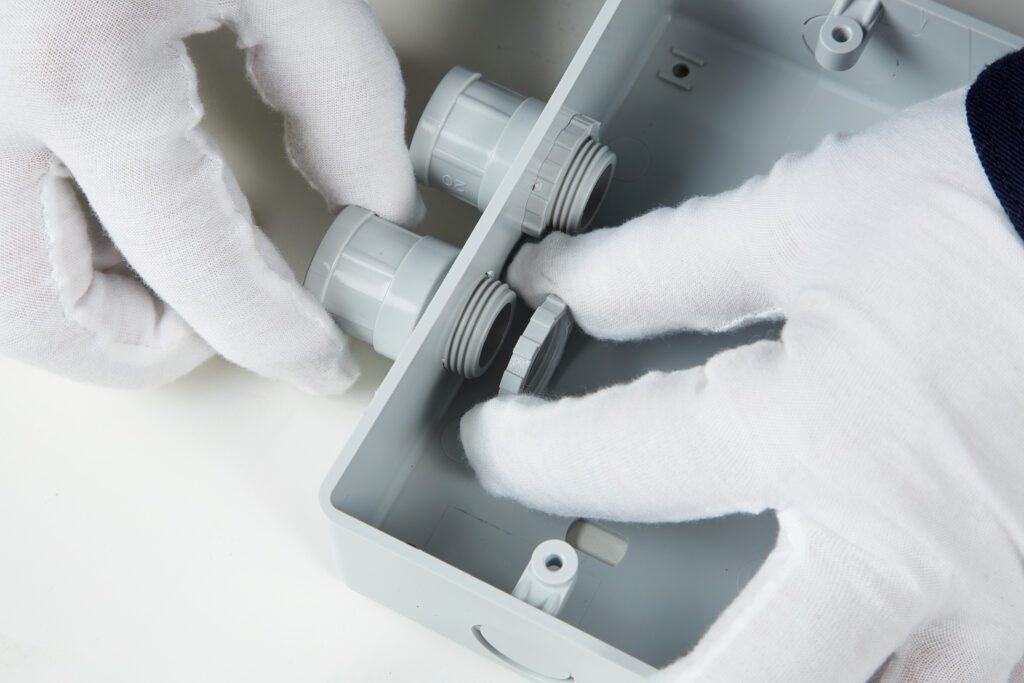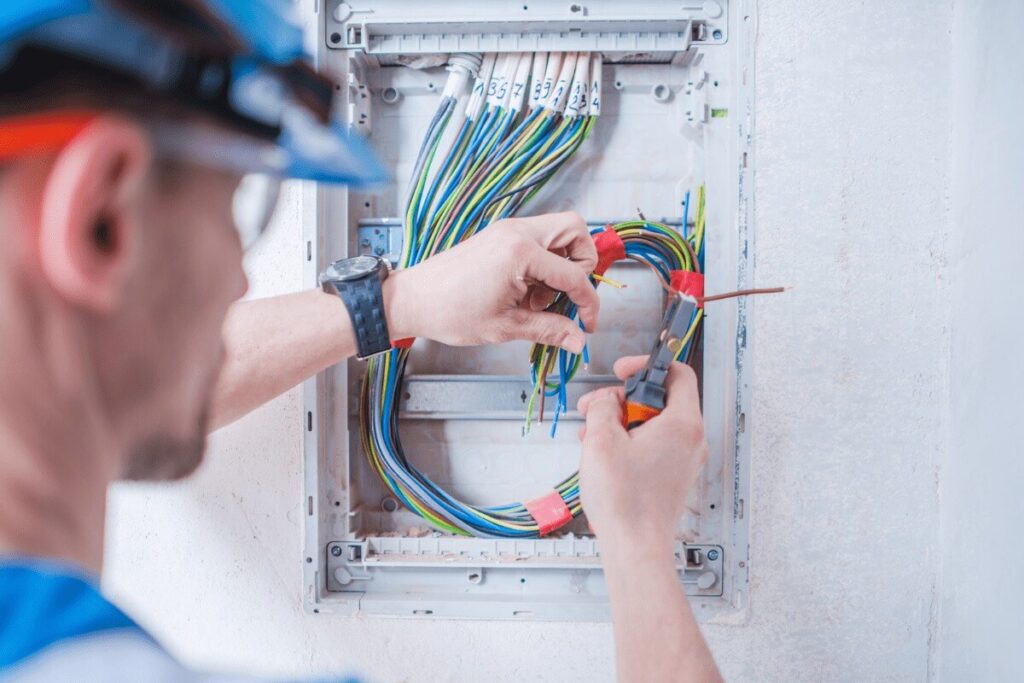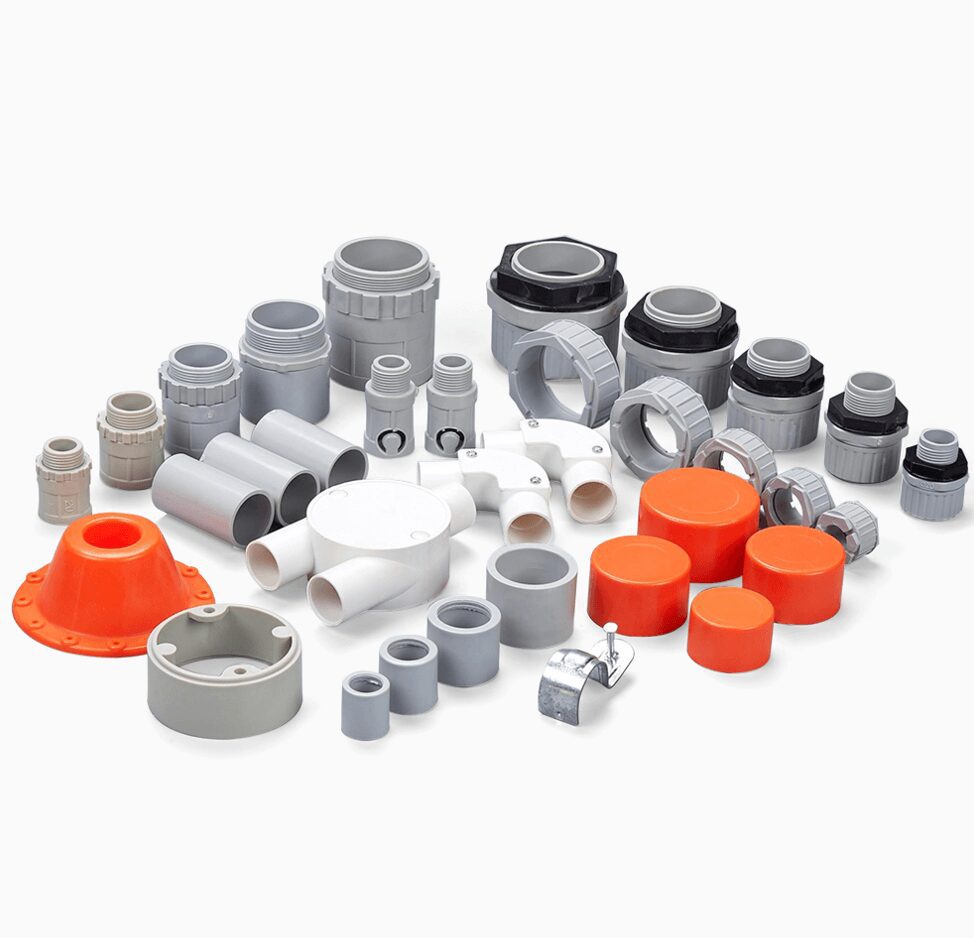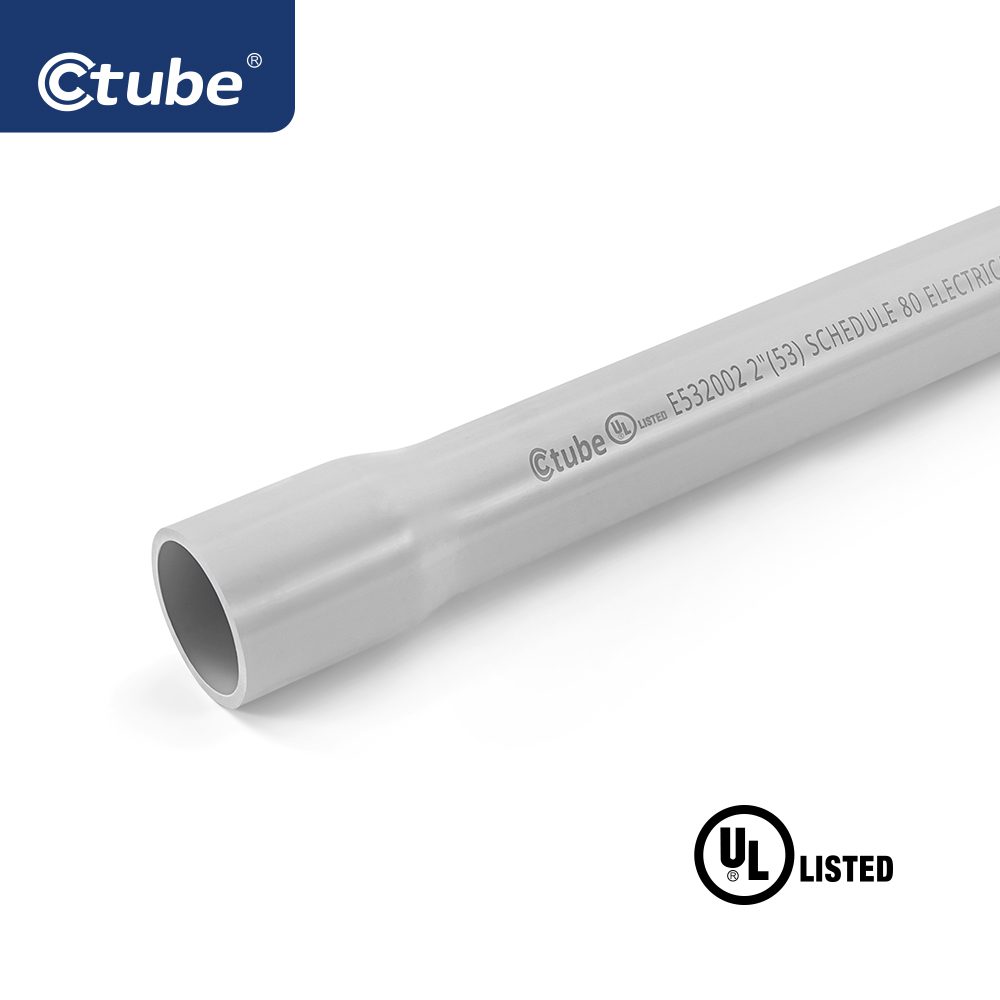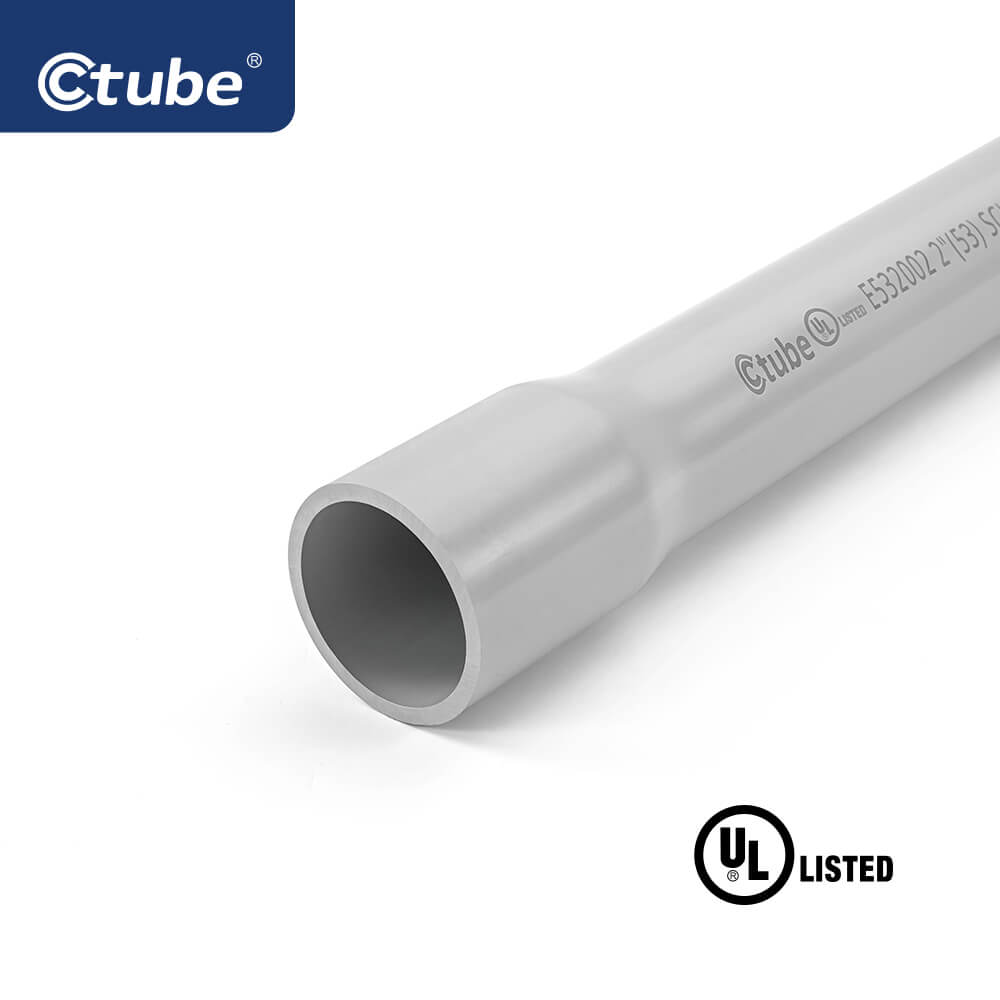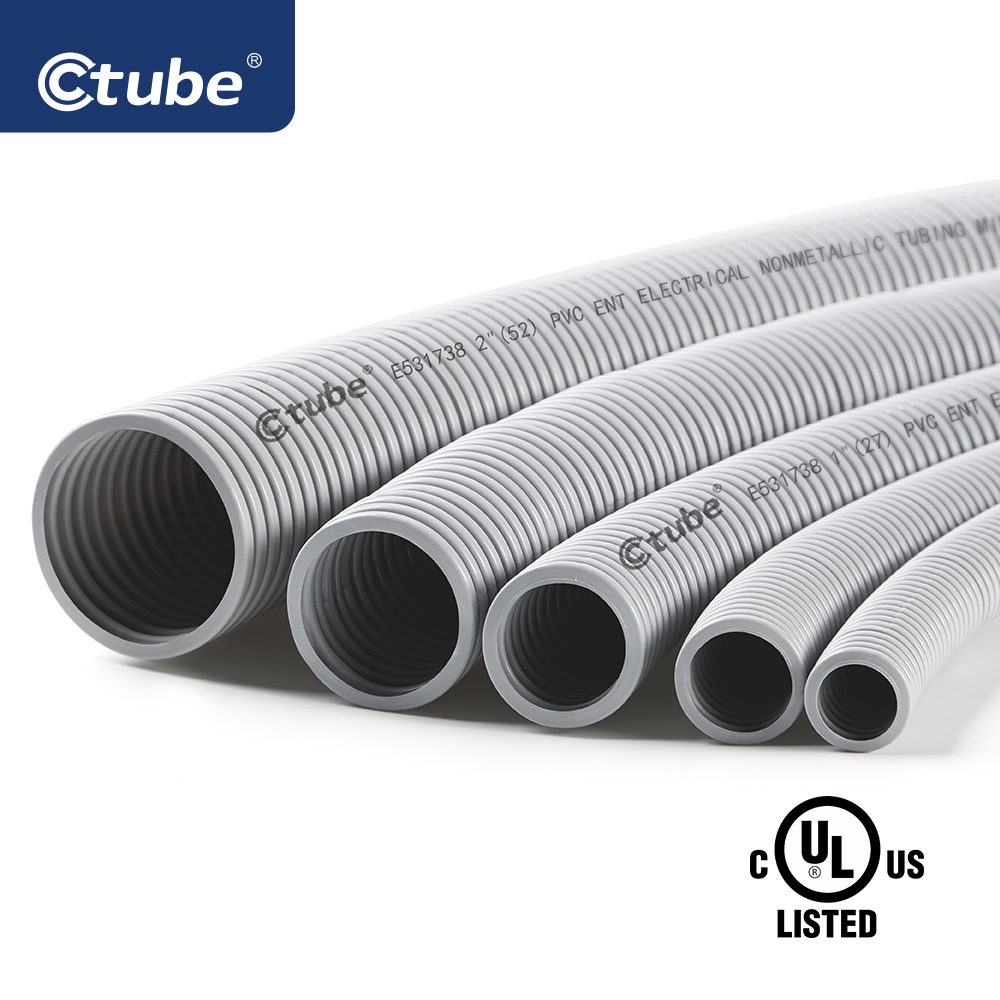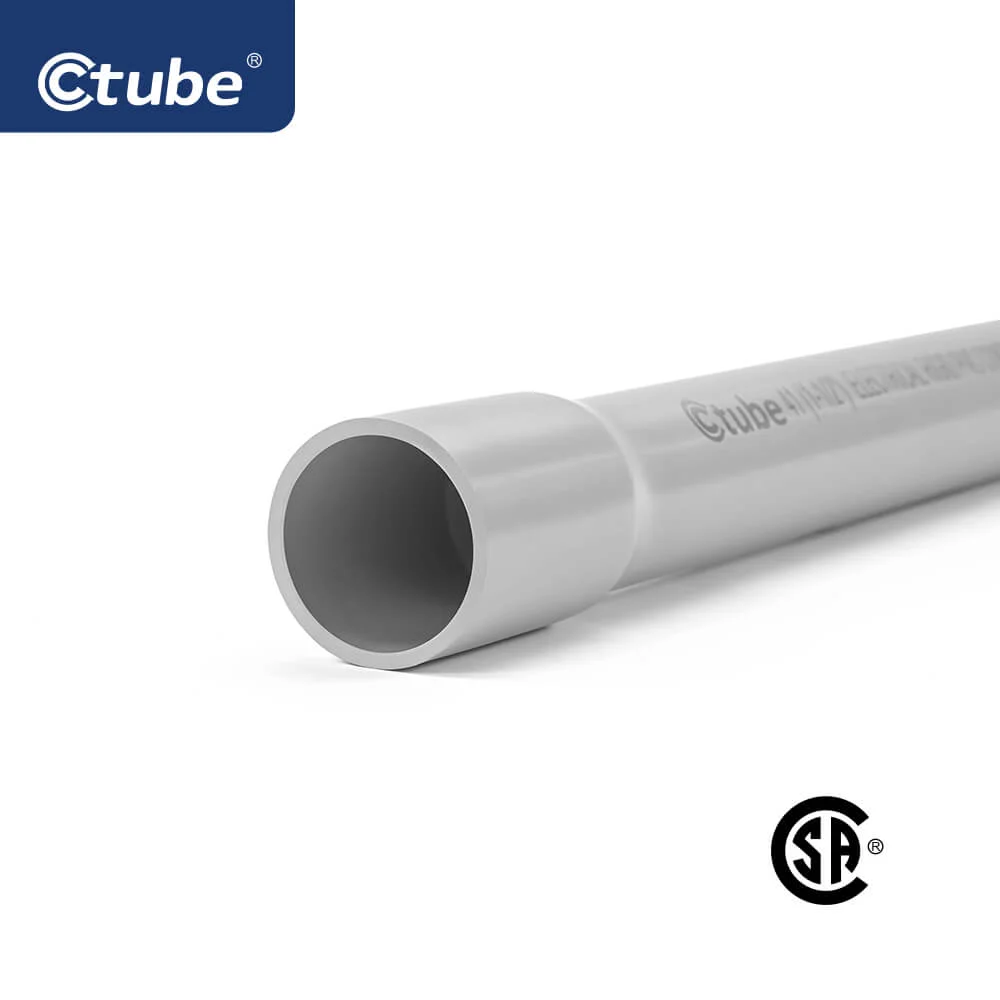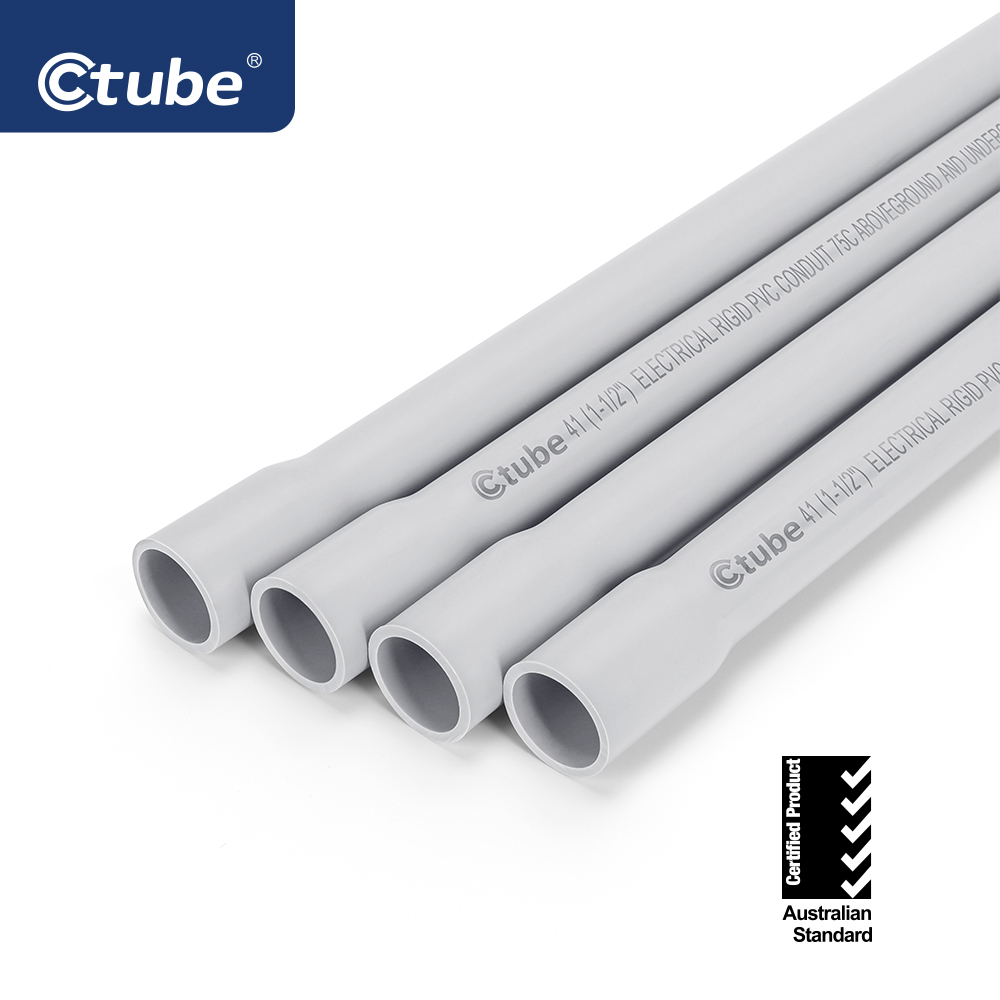Table of Contents
Toggle1. Introduction to PVC Conduit Connectors
PVC conduit connectors play a crucial role in electrical installations, serving as the backbone for routing and protecting electrical wiring. These connectors ensure that electrical systems are both safe and efficient by providing secure connections between PVC conduits. Whether in residential, commercial, or industrial settings, the right choice of PVC conduit connectors can significantly impact the overall performance and reliability of the electrical infrastructure.
Selecting the appropriate PVC conduit connectors is essential for maintaining safety and efficiency. Incorrect or substandard connectors can lead to a host of problems, including electrical faults, system failures, and even safety hazards such as electrical fires. Therefore, understanding the different types of connectors, their specific uses, and the best installation practices is fundamental for any electrical project.
In this comprehensive guide, we will delve into the various types of PVC conduit connectors, offering detailed installation tips and highlighting the importance of adhering to safety standards. We will also compare PVC conduit connectors with their metal counterparts to help you make informed decisions based on durability, cost, and application suitability. Additionally, we will provide maintenance and troubleshooting tips to ensure the longevity and reliability of your electrical system. Finally, we will discuss how to choose and customize the right PVC conduit connector tailored to your specific electrical project needs.
2. Exploring Types of Electrical PVC Conduit Connector
PVC conduit connectors come in various types, each designed to serve specific functions within an electrical system. Understanding these types, including conduit couplings, elbow connectors, tee connectors, male adapters, and PVC reducers, along with their uses and proper installation methods, is crucial for creating efficient, safe, and durable electrical installations. This section covers these different types of PVC conduit connectors, along with practical tips and precautions for their installation.
2.1 Using Conduit Coupling to Connect Two Common Conduits
Conduit couplings are essential components used to extend the length of a conduit run by securely connecting two pieces of conduit of the same size end-to-end. They ensure a continuous and protected pathway for electrical wiring, preventing exposure to environmental elements and maintaining the system’s integrity. By providing a seamless connection, conduit couplings help safeguard the wiring from physical damage and electrical faults, ensuring the system operates efficiently and safely.
Conduit couplings are cylindrical fittings made from durable PVC, designed to fit snugly over the ends of two conduits. They typically have a smooth interior to allow for easy insertion of the conduit ends, ensuring a tight and secure fit. There are different types of conduit couplings to accommodate various conduit systems:
– Standard Couplings: These are used for rigid PVC conduits and have a simple, smooth interior. They require the use of solvent cement to bond the conduit ends securely.
– ENT Couplings: Designed for Electrical Nonmetallic Tubing (ENT), these couplings often feature internal grips or threads that align with the corrugated surface of the conduit, ensuring a secure connection without the need for solvent cement.
Note on ENT Couplings for Corrugated Conduits
ENT couplings are specifically designed for use with corrugated conduits, which have a flexible, ribbed structure. These couplings typically feature internal gripping mechanisms or threads that align with the corrugated surface of the conduit, providing a secure connection that accommodates the conduit’s flexibility. Unlike standard couplings for rigid conduits, ENT couplings sometimes do not require solvent cement.
2.2 Choosing Elbow Connectors to Make Smooth Turns
Elbow connectors, typically 90-degree bends, are used to change the direction of a conduit run, allowing the conduit to navigate around corners and obstacles while maintaining the integrity of the wiring path. These connectors ensure that the electrical wiring remains protected and properly routed through changes in direction, which is crucial for both safety and functionality.
Elbow connectors are curved fittings made of PVC that fit over the ends of two conduits, creating a smooth bend. They come in various angles, with 90 degrees being the most common, to accommodate different directional needs. Ctube provides elbow connectors in various angles, including 22.5-degree, 45-degree, and 90-degree angles, to suit different installation scenarios. Selecting the correct angle is essential for ensuring that the conduit system adapts perfectly to the layout of the installation site.
2.3 Tee Connectors for Branching Conduit Systems
Tee connectors are T-shaped fittings designed to facilitate branching in a conduit system, allowing one conduit line to split into two or more directions. They are essential for creating junctions where multiple conduits meet, enabling the efficient distribution of electrical wiring within a structure.
Tee connectors are made of PVC and have three openings: one inlet and two outlets. This configuration allows a single conduit run to branch out in two different directions. Tee connectors are crucial in complex conduit systems where wiring needs to be distributed to multiple locations. They come in various sizes to match different conduit diameters, ensuring compatibility and a secure fit.
2.4 Male Adapters for Transitioning Between Conduit and Box
Male adapters serve as essential components for transitioning from a PVC conduit to an electrical box or another threaded fitting. They facilitate a secure and reliable connection between the conduit and the box, ensuring the seamless integration of electrical wiring within the system.
Male adapters have one end that fits into the conduit and another end with external threads that screw into an electrical box or fitting. Made from durable PVC, they provide a secure and reliable transition from conduit to box. These adapters are essential for ensuring that the conduit system is properly terminated and that the wiring within the box is protected from environmental factors and physical damage.
2.5 PVC Reducers for Adapting Different Conduit Sizes
Reducers are essential fittings used to connect conduits of different diameters, facilitating smooth transitions between various conduit sizes within an electrical system. They ensure compatibility and continuity in conduit runs, accommodating changes in conduit size without compromising the integrity of the wiring path.
Reducers are designed to connect a larger conduit to a smaller one, allowing for flexibility in conduit runs where different sizes are necessary. They are made from PVC and have two openings of different diameters. The larger opening fits over the larger conduit, while the smaller opening fits over the smaller conduit. This seamless transition is crucial for maintaining the integrity and protection of the electrical wiring throughout the conduit system.
By understanding and following these detailed descriptions, you can ensure that PVC conduit connectors are used effectively in your electrical installations. Proper handling and attention to detail in the selection and application of these connectors will enhance the safety, reliability, and longevity of your conduit system.
3. Tips for Step-by-Step Installation of PVC Conduit Connectors
3.1 Tools and Materials Required for a Successful Installation
– Tape Measure: For accurate measurement of conduit lengths.
– Marker: To mark cutting points on the conduit.
– Conduit Cutter or Saw: To cut the PVC conduit to the desired lengths.
– Deburring Tool: To remove burrs and smooth out rough edges from cut conduit ends.
– PVC Solvent Cement: Specifically designed for PVC conduit, ensuring a strong and durable bond.
– Applicator Brush or Dauber: For applying solvent cement evenly to conduit ends and connectors.
– Clean Cloth or Rag: To clean conduit and connector surfaces before applying solvent cement.
– Gloves: To protect hands from solvent cement and sharp edges.
– Wrench: If using threaded connectors, for tightening connections securely.
– Thread Sealant Tape: For sealing threaded connections to prevent leaks.
3.2 Preparation
– Measure and Cut: Begin by measuring the required lengths of PVC conduit using a tape measure. Mark the cutting points with a marker to ensure precision.
– Cutting: Use a conduit cutter or saw to make clean, straight cuts at the marked points. Avoid jagged edges as they can hinder a proper fit inside the connectors.
– Deburring: After cutting, use a deburring tool to remove any burrs or rough edges from the inside and outside of the conduit ends. Smooth edges ensure a secure fit and prevent damage to the connectors.
3.3 Applying Solvent Cement
– Clean Surfaces: Wipe the outside of the conduit ends and the inside of the connectors with a clean cloth or rag to remove dirt, dust, and debris. Clean surfaces ensure better adhesion.
– Apply Solvent Cement: Stir the PVC solvent cement thoroughly to ensure it is well mixed. Apply a generous layer of solvent cement to the outside of the conduit ends and the inside of the connectors using an applicator brush or dauber.
– Insert and Twist: Quickly insert the conduit ends into the connectors, twisting them slightly as you push them together. This twisting action helps to evenly distribute the solvent cement, ensuring a strong and uniform bond.
3.4 Curing
– Hold and Set: Hold the connected pieces together firmly for about 10-15 seconds after assembly. This initial holding period allows the solvent cement to set and prevents the conduits from shifting.
– Allow to Cure: Follow the manufacturer’s instructions for curing time, typically allowing at least 2 hours for the cement to fully cure before applying any stress to the joints. Avoid disturbing or moving the conduits during this time to ensure a solid bond.
3.5 Final Checks
– Inspect Alignment: After the solvent cement has cured, visually inspect the alignment of the conduits within the connectors. They should be straight and properly seated to ensure optimal performance.
– Test the Connection: Gently tug on each conduit to test the strength of the connection. A properly bonded joint will hold firm without any movement or separation.
3.6 Common Mistakes to Avoid During Installation
– Uneven Cement Application: Ensure the solvent cement is applied evenly to both the conduit ends and the inside of the connectors. Uneven application can lead to weak spots in the bond.
– Insufficient Curing Time: Rushing the curing process can result in weak joints that may fail over time. Allow adequate curing time as specified by the cement manufacturer.
– Incorrect Cutting Techniques: Use a sharp conduit cutter or saw to make clean cuts. Jagged or uneven cuts can prevent proper seating of the conduit within the connectors.
– Over-Twisting: While a slight twist helps evenly distribute the solvent cement, avoid excessive twisting which can stress the joint and weaken the bond.
3.7 Additional Tips for Male Adapters
– Thread Compatibility: Before installation, verify that the threads on the male adapter and the electrical box or fitting are compatible. Mismatched threads can result in leaks or insecure connections. Ensure a proper fit to maintain a tight seal and prevent potential issues.
– Tightening: Use appropriate force when tightening the male adapter into the electrical box or fitting. Avoid over-tightening, as this can damage the threads or conduit. A snug fit is sufficient to ensure a secure connection without compromising structural integrity.
– Inspect for Leaks: After installation, thoroughly inspect the connection for any signs of leaks or gaps. Address any issues promptly to prevent water ingress or other potential hazards. Checking for leaks ensures the integrity of the conduit system and maintains optimal performance.
4. Ensuring Safety and Compliance with PVC Conduit Connectors
4.1 ASTM Standards
The American Society for Testing and Materials (ASTM) establishes standards for various materials, including PVC used in conduit fittings. ASTM standards ensure that PVC materials used in electrical applications meet specific criteria for performance, durability, and safety. Key ASTM standards relevant to PVC conduit fittings include:
– ASTM D1784: Standard Specification for Rigid Poly(Vinyl Chloride) (PVC) Compounds and Chlorinated Poly(Vinyl Chloride) (CPVC) Compounds. This standard covers the basic properties of PVC compounds used in conduit fittings, ensuring they meet minimum requirements for strength, impact resistance, and chemical resistance.
– ASTM F512: Standard Specification for Smooth-Wall Poly(Vinyl Chloride) (PVC) Conduit and Fittings for Underground Installation. This specification covers PVC conduit and fittings specifically designed for underground applications, ensuring they withstand environmental factors and provide long-term durability.
– ASTM F1488: Standard Specification for Coextruded Composite Pipe. This standard applies to coextruded composite PVC pipes, ensuring they meet requirements for structural integrity, pressure resistance, and compatibility with fittings.
4.2 NEC (National Electrical Code)
The National Electrical Code (NEC), published by the National Fire Protection Association (NFPA), sets forth electrical standards and safety requirements in the United States. Relevant sections of the NEC that pertain to PVC conduit fittings include:
– Article 352: Rigid Polyvinyl Chloride Conduit: Type PVC. This article specifies the use, installation methods, and permissible applications of PVC conduit in electrical installations.
– Article 354: Nonmetallic Underground Conduit with Conductors. This article covers the use of nonmetallic conduit, including PVC, for underground installations, ensuring compliance with burial depths, protection against damage, and environmental considerations.
– Article 358: Electrical Metallic Tubing: Type EMT. While not directly related to PVC, this article compares and contrasts the use of metallic conduit with nonmetallic (including PVC) options, highlighting when each type is suitable.
4.3 CSA Standards C22.2
The CSA Group (formerly the Canadian Standards Association) develops standards used in Canada and internationally. Relevant CSA standards for PVC conduit fittings include:
– CSA C22.2 No. 211.1: Rigid PVC Conduit and Fittings. This standard specifies requirements for rigid PVC conduit and fittings used in electrical installations in Canada, ensuring they meet safety and performance criteria.
– CSA C22.2 No. 227.2: Electrical Nonmetallic Tubing (ENT). This standard covers the use of ENT, which includes corrugated PVC conduit, ensuring it meets safety and performance requirements for residential and commercial applications.
4.4 NEMA TC-13
The National Electrical Manufacturers Association (NEMA) develops standards for electrical products and systems. NEMA TC-13 specifically covers PVC conduit, fittings, and accessories. Key aspects of NEMA TC-13 include:
– Material Specifications: Defines the material properties, including mechanical, thermal, and chemical resistance characteristics of PVC conduit and fittings.
– Performance Requirements: Specifies performance criteria such as impact resistance, flexibility, and dimensional tolerances for PVC conduit and fittings.
– Installation Guidelines: Provides guidance on the proper installation methods for PVC conduit and fittings to ensure safety and compliance with electrical codes and regulations.
4.5 FT-4 Rated
FT-4 (Fire Test 4) is a standard rating used to classify the fire resistance of cables and wires in Canada. For PVC conduit fittings, FT-4 rated indicates that the material meets specific fire resistance requirements, ensuring it can withstand fire exposure without contributing significantly to the spread of flames.
Compliance with ASTM, NEC, CSA, NEMA, and FT-4 standards ensures that PVC conduit fittings meet rigorous safety and performance criteria. These standards cover material composition, product specifications, installation guidelines, and fire safety, ensuring that PVC conduit fittings provide reliable protection for electrical wiring in various applications. Adherence to these standards is essential to ensure the safety, reliability, and regulatory compliance of electrical installations using PVC conduit fittings.
5. Comparison Between PVC Conduit Connectors and Metal Conduit Connectors
PVC (Polyvinyl Chloride) and metal (typically steel or aluminum) conduit connectors serve similar functions in electrical installations but differ significantly in their material properties, installation requirements, and overall performance characteristics.
5.1 Durability and Longevity
5.1.1 Comparison of Lifespan and Maintenance Needs
PVC Conduit Connectors:
– Lifespan: PVC conduit connectors are durable and can last for several decades under normal operating conditions. The lifespan is influenced by factors such as exposure to sunlight (UV resistance), temperature fluctuations, and mechanical stress.
– Maintenance: PVC connectors generally require minimal maintenance beyond occasional cleaning. They do not rust or corrode, which reduces the need for regular inspections and upkeep compared to metal.
Metal Conduit Connectors:
– Lifespan: Metal conduit connectors, particularly those made of steel or aluminum, are known for their robustness and longevity. Properly installed and maintained metal conduits can last for many decades, often outlasting PVC in harsh environments.
– Maintenance: Metal conduits require periodic inspections for rust, corrosion, and mechanical damage. They may need protective coatings or treatments to prevent corrosion, especially in outdoor or corrosive environments.
5.1.2 Impact of Environmental Factors on Materials
PVC Conduit Connectors:
– Environmental Impact: PVC is resistant to moisture and most chemicals, making it suitable for both indoor and outdoor applications. It performs well in mild to moderate environmental conditions.
– UV Resistance: PVC can degrade over time when exposed to prolonged sunlight (UV radiation), leading to brittleness and reduced lifespan if not UV stabilized.
Metal Conduit Connectors:
– Environmental Impact: Metal conduits are highly resilient to environmental factors such as fire, extreme temperatures, and physical impact. They provide robust protection in harsh conditions.
– Corrosion Resistance: Metals like galvanized steel or aluminum are corrosion-resistant with proper coatings, making them suitable for outdoor use and corrosive environments.
5.2 Resistance and Performance
5.2.1 Electrical Insulation Properties Compared
PVC Conduit Connectors:
– Insulation: PVC provides excellent electrical insulation, preventing leakage and maintaining safe electrical conductivity within the conduit system. It reduces the risk of electrical faults and short circuits.
– Dielectric Strength: PVC has a high dielectric strength, which ensures effective insulation even under varying electrical loads and conditions.
Metal Conduit Connectors:
– Insulation: Metal conduits offer reliable electrical grounding and shielding against electromagnetic interference (EMI). However, metal conduits can conduct electricity, requiring proper grounding to prevent electrical hazards.
– Dielectric Strength: Metals have lower dielectric strength compared to PVC, which may limit their effectiveness in high-voltage applications without additional insulation measures.
5.2.2 Advantages in Corrosion Resistance and Material Flexibility
PVC Conduit Connectors:
– Corrosion Resistance: PVC does not corrode or rust, making it suitable for damp or corrosive environments where metal would degrade.
– Flexibility: PVC is lightweight and flexible, allowing for easier handling and installation in tight spaces or areas requiring bending.
Metal Conduit Connectors:
– Corrosion Resistance: Metal conduits can be galvanized or made from corrosion-resistant alloys, offering superior protection in harsh outdoor environments.
– Material Flexibility: Metal conduits are rigid and less flexible than PVC, requiring fittings for bends and turns, which can complicate installation in tight spaces.
5.3 Cost Considerations
5.3.1 Initial Costs and Long-Term Savings
PVC Conduit Connectors:
– Initial Costs: PVC conduits and connectors are generally less expensive than their metal counterparts, making them cost-effective for initial installations.
– Long-Term Savings: PVC requires minimal maintenance and has lower installation costs due to lightweight and ease of handling, contributing to long-term savings.
Metal Conduit Connectors:
– Initial Costs: Metal conduits and fittings are more expensive upfront due to higher material costs and sometimes complex installation requirements.
– Long-Term Savings: Metal conduits may require periodic maintenance and replacement due to corrosion or mechanical wear, potentially increasing long-term costs.
5.3.2 Economic Benefits of Each Material in Varied Applications
PVC Conduit Connectors:
– Applications: Ideal for residential, commercial, and indoor installations where cost-effectiveness, ease of installation, and resistance to moisture are essential.
– Suitability: PVC is preferred for applications where flexibility, lightweight handling, and straightforward installation are advantageous.
Metal Conduit Connectors:
– Applications: Suitable for industrial, outdoor, and high-risk environments requiring robust protection against physical damage, fire, and extreme weather conditions.
– Suitability: Metal conduits are chosen for applications demanding high durability, enhanced fire resistance, and superior mechanical strength.
The choice between PVC and metal conduit connectors depends on specific project requirements, environmental factors, and budget considerations.
6. Maintenance and Troubleshooting Tips for PVC Conduit Connectors
Proper maintenance of PVC conduit connectors is essential to ensure the longevity, reliability, and safety of electrical installations. This section covers common issues, maintenance practices, and indicators for replacement.
6.1 Common Issues
6.1.1 Identification of Common Connector Problems
1. Leaks: Seepage of water or moisture into the conduit system, compromising insulation and risking electrical faults.
2. Cracks or Breaks: Structural damage to connectors due to physical impact or aging, leading to weakened integrity.
3. Loose Connections: Poorly secured fittings that may result in conduit separation or electrical instability.
4. Corrosion or Discoloration: Surface degradation due to environmental exposure, affecting both aesthetics and functionality.
5. UV Damage: Brittle or degraded connectors from prolonged exposure to sunlight, potentially leading to cracks or failure.
6.1.2 Steps to Troubleshoot and Repair Issues Promptly
– Visual Inspection: Regularly inspect connectors for signs of leaks, cracks, discoloration, or corrosion.
– Testing Electrical Continuity: Use a multimeter to ensure proper electrical conductivity through the connectors.
– Tightening Connections: Secure loose fittings and connections to prevent further damage or electrical hazards.
– Sealing Leaks: Apply PVC sealant or tape to minor leaks to prevent water ingress and maintain insulation.
– Replacing Damaged Parts: Replace cracked or broken connectors promptly to prevent electrical faults or system failures.
6.2 Maintenance Practices
6.2.1 Tips for Extending the Lifespan of PVC Connectors
– Use UV-Resistant Products: Choose UV-stabilized PVC connectors for outdoor installations to resist sun damage.
– Avoid Mechanical Stress: Handle connectors with care during installation and avoid excessive bending or twisting.
– Clean Regularly: Remove dirt, debris, or chemical residues from connectors to prevent deterioration.
– Inspect Seals and Gaskets: Ensure seals are intact and gaskets are in good condition to maintain waterproofing.
6.2.2 Scheduled Inspections and Cleaning Procedures
– Regular Inspections: Conduct quarterly or bi-annual inspections of connectors for wear, damage, or environmental effects.
– Cleaning Procedures: Clean connectors and avoid harsh chemicals that can degrade PVC.
– Greasing Moving Parts: Apply non-corrosive lubricants to movable parts to maintain smooth operation and prevent frictional wear.
– Verify Grounding: Check grounding connections periodically to ensure electrical safety and continuity.
6.3 Replacement Indicators
6.3.1 Signs Indicating the Need for Connector Replacement
– Severe Cracks or Breaks: Structural damage compromising the integrity and safety of the conduit system.
– Persistent Leaks: Inability to seal leaks despite maintenance efforts, risking electrical faults.
– Brittleness or Discoloration: Signs of aging or UV damage affecting material strength and reliability.
– Corrosion: Rust or corrosion on metal parts of connectors, indicating potential electrical hazards.
6.3.2 Importance of Timely Upgrades for Safety and Efficiency
– Enhanced Safety: Prevent electrical hazards and ensure compliance with safety standards by replacing compromised connectors.
– Improved Efficiency: Maintain uninterrupted electrical flow and prevent system downtime due to connector failures.
– Cost Savings: Avoid costly repairs or replacements of other electrical components damaged by faulty connectors.
Proper maintenance and timely replacement of PVC conduit connectors are crucial for ensuring the safety, reliability, and longevity of electrical systems. By identifying common issues, implementing regular maintenance practices, and promptly replacing worn or damaged connectors, you can mitigate risks, extend equipment life, and optimize electrical system performance. Regular inspections, careful handling, and adherence to manufacturer guidelines for installation and maintenance will help maximize the effectiveness of PVC conduit connectors in various applications.
7. Conclusion: Choosing and Customizing the Right PVC Conduit Connector
Selecting PVC conduit connectors involves several critical considerations to ensure compatibility, durability, and efficiency in electrical systems:
1. Project Requirements: Assess the specific needs of your project, including conduit size, environmental factors, and installation conditions.
2. Material Quality: Opt for high-quality PVC connectors that meet industry standards for durability, UV resistance, and electrical insulation properties.
3. Compatibility: Ensure connectors are compatible with existing conduits, fittings, and electrical boxes to facilitate seamless integration.
4. Environmental Factors: Consider factors such as exposure to UV light, moisture, and temperature fluctuations, selecting connectors that withstand these conditions.
At Ctube, we understand that every project is unique, requiring tailored solutions for optimal performance and efficiency. Our customization options for PVC conduit connectors include various sizes to accommodate different conduit diameters and system requirements. Additionally, we offer a variety of angles (e.g., 90 degrees, 45 degrees, 22.5 degrees) and various fittings and accessories (e.g., couplings, elbows, tees connector and male adapter) to suit specific installation layouts and directional needs.
For specialized applications, we provide customized connectors that meet specific needs across various industries. This includes our low smoke, halogen-free solar photovoltaic series, which offer increased UV resistance and non-toxic, smoke-free combustion properties. Moreover, we offer different color options for connectors to help differentiate between various electrical systems within a building.

